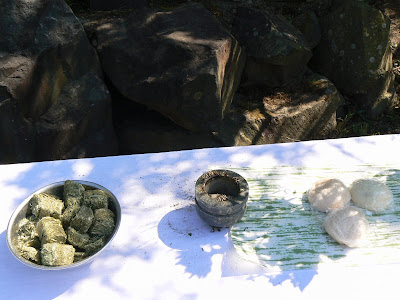Before the Grand Prix...

... a prayer to the Bodhisattva protector of horses, Batô-Kannon-Bosatsu...



Iizuna, Nagano
20-21 September 2008
When we see the beauty of the snow, when we see the beauty of the full moon, when we see the beauty of the cherries in bloom, when in short we brush against and are awakened by the beauty of the four seasons, it is then that we think most of those close to us, and want them to share the pleasure. (Yasunari Kawabata)




 What is the purpose of intelligence if not to serve others? And I'm not referring to the false servitude that high-ranking state-employed flunkeys exhibit so proudly, as if it were a badge of virtue: the façade of humility they wear is nothing more than vanity and disdain. Cloaked every morning in the ostentatious modesty of the high-ranking civil servant, Etienne de Broglie convinced me long ago of the pride of his caste. Inversely, privilege brings with it true obligations. If you belong to the inner sanctum of the elite, you must serve in equal proportion to the glory and ease of material existence you derive from belonging to that inner sanctum. What would I do if I were Colombe Josse, a young student at the École Normale with all my future before me? I would dedicate myself to the progress of Humanity, with resolving issues that are crucial for the survival, well-being and elevation of mankind, with the fate of Beauty in the world, or with the just crusade for philosophical authenticity. It's not a calling, there are choices, the field is wide. You do not take up philosophy the way you enter the seminary, with a credo as your sword and a single path as your destiny. Should you study Plato, Epicurus, Descartes, Spinoza, Kant, Hegel or even Husserl? Esthetics, politics, morality, epistemology, metaphysics? Should you devote your time to teaching, to producing a body of work, to research, to Culture? It makes no difference. The only thing that matters is your intention: are you elevating thought and contributing to the common good, or rather joining the ranks in a field of study whose only purpose is its own perpetuation, and only function the self-reproduction of a sterile elite - for this turns the university into a sect.
What is the purpose of intelligence if not to serve others? And I'm not referring to the false servitude that high-ranking state-employed flunkeys exhibit so proudly, as if it were a badge of virtue: the façade of humility they wear is nothing more than vanity and disdain. Cloaked every morning in the ostentatious modesty of the high-ranking civil servant, Etienne de Broglie convinced me long ago of the pride of his caste. Inversely, privilege brings with it true obligations. If you belong to the inner sanctum of the elite, you must serve in equal proportion to the glory and ease of material existence you derive from belonging to that inner sanctum. What would I do if I were Colombe Josse, a young student at the École Normale with all my future before me? I would dedicate myself to the progress of Humanity, with resolving issues that are crucial for the survival, well-being and elevation of mankind, with the fate of Beauty in the world, or with the just crusade for philosophical authenticity. It's not a calling, there are choices, the field is wide. You do not take up philosophy the way you enter the seminary, with a credo as your sword and a single path as your destiny. Should you study Plato, Epicurus, Descartes, Spinoza, Kant, Hegel or even Husserl? Esthetics, politics, morality, epistemology, metaphysics? Should you devote your time to teaching, to producing a body of work, to research, to Culture? It makes no difference. The only thing that matters is your intention: are you elevating thought and contributing to the common good, or rather joining the ranks in a field of study whose only purpose is its own perpetuation, and only function the self-reproduction of a sterile elite - for this turns the university into a sect.
 Photo source: Jim Brandenburg
Photo source: Jim Brandenburg Throughout the ages, and all over the world, people have been awed by their local trees. Belief in tree spirits and in the sacredness of trees is widespread. To the ancient Greeks and Romans, trees were thought to be inhabited by female spirits called Dryad (oak trees) or Meliae (ash trees). In Scottish folklore a friendly tree spirit, called the Ghillie Dhu, helps lost children find their way home.
Throughout the ages, and all over the world, people have been awed by their local trees. Belief in tree spirits and in the sacredness of trees is widespread. To the ancient Greeks and Romans, trees were thought to be inhabited by female spirits called Dryad (oak trees) or Meliae (ash trees). In Scottish folklore a friendly tree spirit, called the Ghillie Dhu, helps lost children find their way home.
 Oni-daiko / Demon Drum Dance
Oni-daiko / Demon Drum Dance